MACULAR DEGENERATION
in New York City
Macular degeneration is the leading cause of vision loss among older Americans. As the population ages, the number of people affected by AMD is expected to increase significantly, doubling by the year 2050.
MACULAR DEGENERATION FAQS
What is Macular Degeneration?
Macular degeneration, also called age-related macular degeneration (ARMD) or AMD, is a deterioration of the small central area of the retina, the macula that controls visual acuity. Your macular health determines your ability to read, watch TV, recognize faces, drive, use a computer and perform other tasks that require you to see fine detail.
Macular degeneration is the leading cause of vision loss among older Americans. As the population ages, the number of people affected by AMD is expected to increase significantly, doubling by the year 2050. Symptoms of macular degeneration include decreased visual acuity, either gradual or sudden-onset, blurred vision, distorted near vision, a scotoma (a dark fixed spot in your vision), visual distortion, or micropsia (objects appearing too small compared to their proportions), and vague other visual symptoms.
There are two main types of macular degeneration. It is either dry (non-neovascular) or wet (neovascular). Neo (new) vascular (vessels) means that there are new blood vessels that grow into the retina. The dry form is more common, representing 85% to 90% of macular degeneration patients diagnosed. The dry form causes central loss, with preservation of peripheral vision. You can sometimes notice distortion of vision, or the appearance of straight lines looking wavy or like in a curved mirror. Something called an Amsler Grid is a small square grid that is a good idea to keep closeby and check about once a week. It is important to check each eye separately by closing the other eye with your hand. Macular degeneration can only be truly diagnosed by a formal eye exam by an ophthalmologist. The diagnosis of dry macular degeneration is made by the clinical exam (when the ophthalmologist looks inside a dilated eye with a lens) and sees some of the following features: macular drusen, retinal pigment changes, and or geographic atrophy. Additionally, your ophthalmologist may perform some diagnostic procedures (link to below)?
What are the classifications of dry macular degeneration?
There are three classifications:
Early ARMD: Defined by the presence of numerous small (<63 microns, “hard”) or intermediate (≥63 microns but <125 microns, “soft”) drusen. Note: Small drusen are frequently seen in those 50 and older, and can represent aging process in general, therefore intermediate drusen are more specific for ARMD.
Intermediate ARMD: Macular disease characterized by either extensive drusen of small or intermediate size, or any drusen of large size (≥125 microns
Advanced ARMD: Defined by the presence of either geographic atrophy or choroidal neovascular membrane (along with its sequelae, such as subretinal or sub-RPE hemorrhage or serous fluid, and subretinal fibrosis).
But it’s the wet form that usually leads to serious vision loss. The wet, or exudatve form, affects 10-15% of ARMD and is the major cause of severe vision loss.
Neovascular means new blood vessels have grown in the macula where they don’t belong. As the diseases progresses, normal vision gives way to central blind spots because macular degeneration mainly affects central vision. When the blood vessels grow, they can cause something called a CNVM, or choroidal neovascular membrane, which is a cluster of bleed vessels that can elevate above the retina and into the vitreous, the cavity of the eye. These choroidal neovascular membranes will eventually involute, but there will be some permanent vision loss remaining. Treating an active choroidal neovascular membrane promptly will help prevent the extent of permanent vision loss.
Who gets Macular Degeneration?
Maular degeneration is genetically inhereited amongst those of European ancestry. Recently, there have been environmental nutritional, and developmental (ie., aging) processes discovered that interact to affect the degeneration observed in the macula. There is a lot of research being done within the field of epigenetics to evaluate what environmental factors turn certain genes on and cause macular degeneration in certain individuals over others.
How do you diagnose Macular Degeneration?
Certain imaging tests are useful in helping make the diagnosis:
Optical Coherence Tomography (OCT). OCT offers a non-invasive, high-resolution, optical cross-sectional method that utilized low-coherence interferometry. This is essentially a photo of your retina, the back of the eye, where macular degeneration occurs. OCT has become indispensable in the evaluation of patients with ARMD. Imaging helps evaluate for tomographic consequences of neovascular membranes, as well as monitor for treatment responses.
Fundus Fluorescein (FA). FA is performed when there is suspicion of a CNVM or leaking blood vessels. It helps define the presence and extent of the bleeding. This image allows for examining the circulation of the retina and choroid (parts of the fundus) using a fluorescent dye and a specialized camera. The fluorescein is administered intravenously in intravenous fluorescein angiography (IVFA), the dye circulates to the blood vessels of the retina, the retina is illuminated with blue light at a wavelength of 490 nanometers, and an angiogram is obtained by photographing the fluorescent green light that is emitted by the dye. The test is a dye tracing method.
Blood tests:There are no routine blood tests available to diagnose ARMD, and although elevated inflammatory markers and certain genetic polymorphisms have been associated with increased risk of developing advanced ARMD, these tests are not routinely employed.
How to treat it?
There is no cure for age-related macular degeneration. Some treatments may delay progression of the disease or even improve vision. Treatment depends on whether the disease is in its early-stage, dry form or in the more advanced, wet form. There are currently no FDA-approved treatments for dry macular degeneration. We may suggest nutritional intervention to help prevent progression to the wet form.
Specifically, this includes the following FDA-approved combination in the AREDs formulation:
-
500 milligrams of vitamin C
-
400 International Units of vitamin E
-
80 milligrams of zinc as zinc oxide
-
2 milligrams of copper as cupric oxide
-
10 mg lutein and 2 mg zeaxanthin
If you are a smoker, high dose beta-carotene supplementation in the AREDS formula can increase the risk for lung cancer. Smokers should use a non-beta-carotene-containing supplement. In addition, some research studies reveal positive associations between good nutrition and reducing your risk of AMD. A diet rich in salmon and other coldwater fishes with high amounts of omega-3 fatty acids may prevent AMD or reduce its progression. If you have a family history of macular degeneration you can consider vitamins and most importantly eat a balanced diet.
While there is no treatment for dry macular degenariton, there are numerous treatments for wet AMD including FDA-approved intravitreal drugs called Lucentis, Eylea, Macugen and Visudyne, used with photodynamic therapy, or PDT.
WHY CHOOSE MANHATTAN EYE?

Treatments with Dr. Rapoport in NYC
Macular Degeneration, both the dry and wet kinds, can impact vision and independence. Dr. Rapoport provides a gentle and comprehensive approach and counsels patients with mild macular degeneration. She manages many cataract surgeries with mild forms of macular degeneration and is able to counsel patients extensively on their lens choices when they have macular degeneration.
“I've been essentially blind my whole life and recently decided to get elective eye surgery. I unfortunately did not qualify for Lasik, but did qualify for PRK.
Dr. Rapoport was fantastic - she explained all my options in detail and was very diligent in giving me instructions pre/post operations - even when I asked twice/three times. She's always available to talk and super empathetic. I could not recommend a better eye surgeon!”
Dr. Rapoport was fantastic - she explained all my options in detail and was very diligent in giving me instructions pre/post operations - even when I asked twice/three times. She's always available to talk and super empathetic. I could not recommend a better eye surgeon!”
M.V.
“Best eye doctor in New York! Dr. Rapoport is very personable, professional and most importantly a great doctor. Dr. Rapoport recently performed my LASIK surgery, for which she gave me clear pre and post-op instructions and made a point to check regularly on my progress. She did a great job to put my nerves at ease and walked me through the entire process. Now three weeks after the surgery I
can see better than ever with 20/20+ vision! I strongly recommend Dr. Rapoport if you are considering LASIK, or if you are simply in need of a great eye doctor.”
N.G.
“I have now seen Dr. Rapoport for dry eyes, removal of papillomas around my eyes, and Lasik
surgery. My experiences with her have all been wonderful. She always takes the time to
explain everything really clearly, and my results have all been great. When I originally asked
about Lasik, she gave me a very balanced perspective on my options, which I really
appreciated. She also has a great energy about her, and she's just an overall pleasure to be
around. I have referred several friends and family to her and they've all said great things about
her as well. I can't recommend her enough.”
M.T.
“After seeing Dr. Rapaport for three months I have experienced the greatest improvement for
my dry eye syndrome than I have in the past 15 years. Dr. Rapaport is very knowledgable and
caring. I am very grateful to her and her staff, in particular to Amy, who has been incredibly
helpful to me. Everyone here conducts themselves in a highly professional manner, and they
also run a tight ship in terms of timeliness. I have been seen every time without waiting any
more than 5 minutes, and this I appreciate a lot. I feel very fortunate to be a patient at this
medical practice.”
H.K.
“Dr Rapoport is a skilled, knowledgeable, sincerely caring medical professional. I started
seeing her a year ago and have since moved out of state. Regardless, it’s a priority for me to
continue under her good care.
I feel confident in her abilities - and it is my eyesight afterall!”
I feel confident in her abilities - and it is my eyesight afterall!”
P.J.




